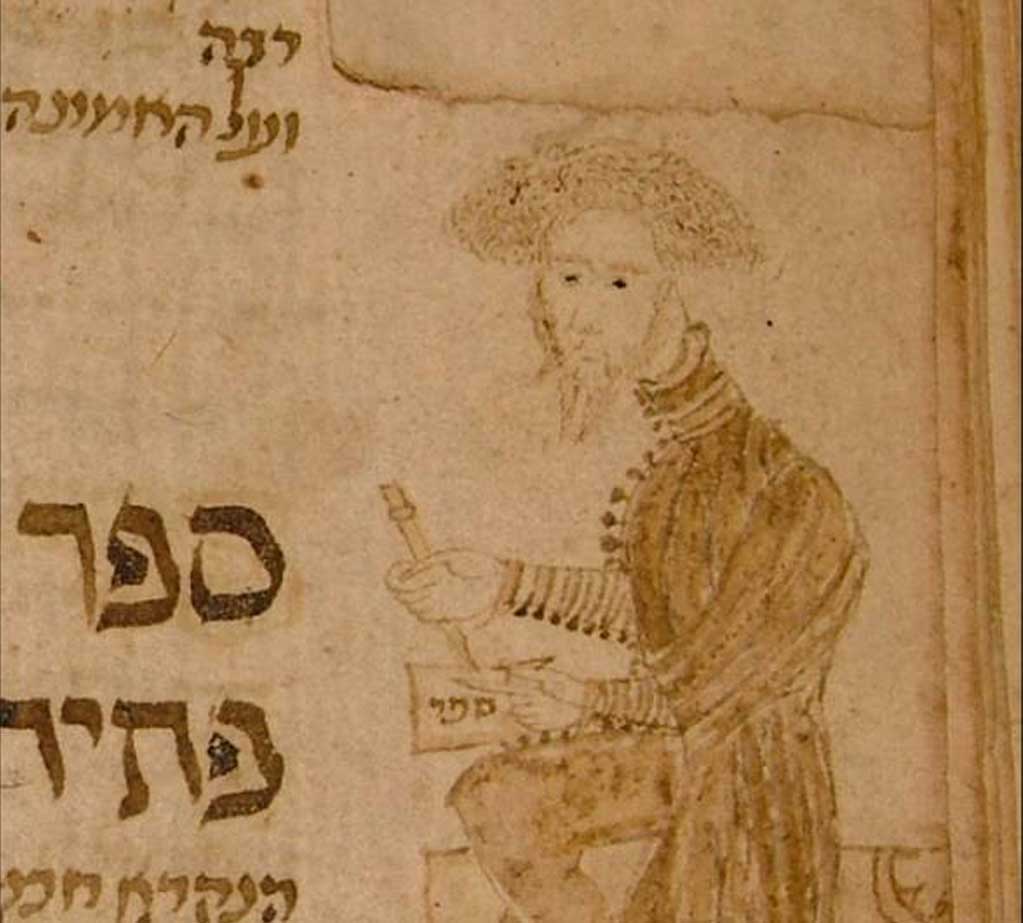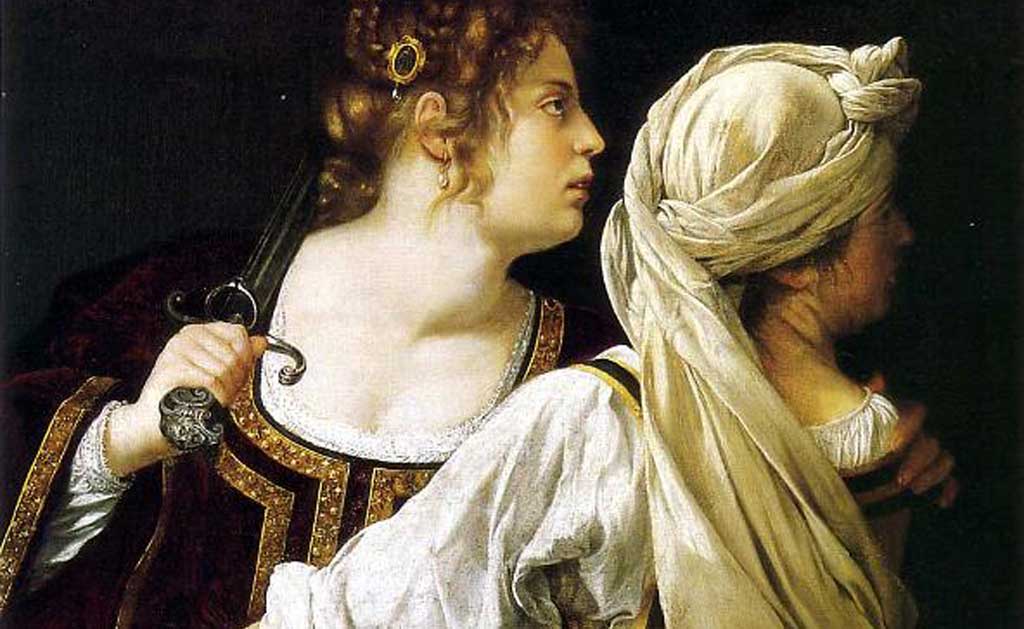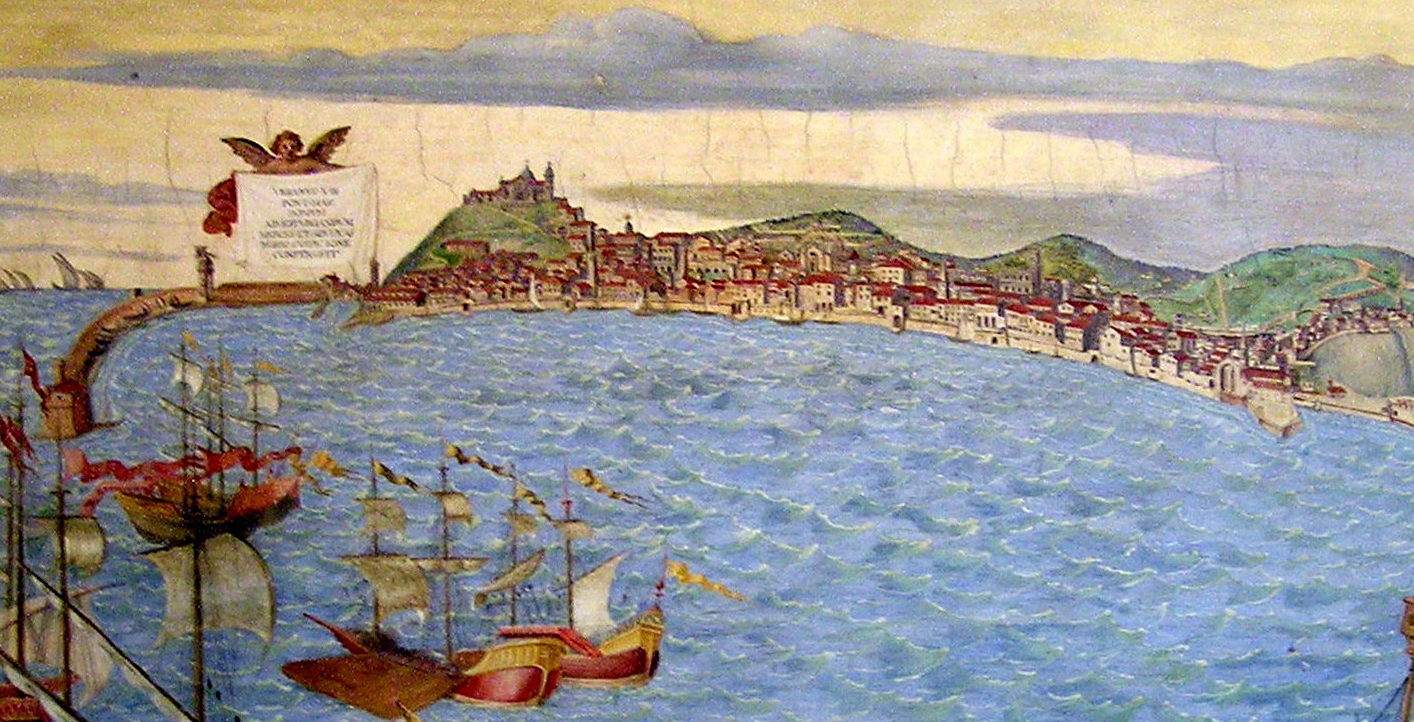Judaism in Puglia as a Metaphor for Mediterranean Judaism
Fabrizio Lelli, University of Salento
The history of Judaism in Puglia is a distillation of thousands of stories of Mediterranean Judaism – fragments that across the millennia collectively comprise a powerful identity. Here are stories of wandering, of links sustained across great distances by faith in ancient traditions; and stories of commercial and cultural exchange across the length and breadth of this Mare Nostrum, where Jews have always played a mediating role.
The first known deportation – one of a long series of exiles that brought the Jews to Italy – dates back to the forced migration from Jerusalem following the Roman destruction of the Second Temple, about 70 CE.
That date marked the beginning of their self-perception as a diaspora, echoing as it did – in the memory of Italian Jews – the deportation of the Jewish elite from their home in the Holy Land to Western Europe. Indeed, to some extent, it also inaugurated the long story of the European communities, a story in which the original exile was but the first of many migrations, most taking place within the Mediterranean area.
Apulia has been a transit point for many Jewish exiles – most heading elsewhere – rendering the region a springboard for the leap Eastward to Israel. In truth, it was her ports – Brindisi, Otranto, Bari, Trani and Barletta, affording – as they had for centuries – prime access to the East, and consequently the Holy Land, that placed Apulia among the first communities of the West European diaspora.
According to legends that have some basis in fact, important post-biblical figures en route to Rome passed through Brindisi where they took part in events that tradition places at the foundation of Rabbinic law.
The outstanding Biblical interpreter Rabbi Akiva, (ca,17- ca 137 CE), to whom many halakhic rulings are attributed, died at the hands of the Romans during the riots that erupted in Israel under Emperor Hadrian. He had been chosen to lead a delegation to Rome to plead the cause of the Jews of Jerusalem, who’d been forbidden to devote themselves to the study of the Bible in the aftermath of the destruction of the Temple. Together with three other colleagues, Akiva made a stop in Brindisi, thereby delaying the arrival of the ship in the harbor so that the rabbis might arrive after the beginning of Shabbat.
How to resolve the transgression of the limits of the sacred day? The solution devised by this authoritative teacher became the precedent of a rule canonized by the Mishna (the Treaty Eruvin, IV). This testimony – one of the first to bind Apulia to the history of modern Judaism – highlights the importance of water to local communities.
The Jews who’d settled in and around Brindisi in the Imperial era, subsequently moving South to Salento and later to the northern coast of the Adriatic engendered communities that, over the centuries, changed significantly in size and cultural characteristics. Not all the Jews who settled in Apulia arrived directly from Palestine, as refugees from Jerusalem. Some arrived by sea from the Balkans, others from Spain and Portugal, or overland from France, Central Europe and other parts of Italy. In Apulia they assimilated with existing groups, creating a Judaism with its own unique profile. When these communities began to disappear from Apulia, a record of their traditions remained in those places where the exiles of Southern Italy had migrated.
Jewish culture in Apulia, whose legacy is today primarily known in areas outside Italy’s peninsula, was highly esteemed in the Middle Ages. The twelfth-century French rabbi, Rabbenu Tam, compared Bari and Otranto to Jerusalem, paraphrasing Isaiah 2.3: “From Bari the Torah will come out and the word of God from Otranto.”
In contemporary Israeli literature, there’s a significant genre of historical and genealogical fiction, where the author narrates the true or presumed story of his or her family
In most cases, because the traditions of the modern State of Israel are linked to central Europe, writers are proud to date their origins to a family of rabbis who lived in medieval Germany.
In his autobiographical novel Havalim (The Pure Element of Time, 1998) Haim Be’er writes that when he was little, his grandmother told him a story: “Our family roots date back to early medieval Mainz…”
Apparently, about a thousand years ago the head of the local Jewish community was the old patriarch of the family: Rabbenu Kalonymus ben Rabbenu Meshullam ben Rabbenu Kalonymus of Lucca, who – according to ancient tradition, was brought to Mainz by the King of the Lombards, French Emperor Charlemagne. It seems, however, that the name Kalonymos/Qalnoymos – though certainly of Greek origin – is classified within Byzantine Judaism: being the translation of Hebrew Shem Tov, or ‘Good Name’, meaning God.
The name was clearly introduced in Apulia at the time of the Byzantine empire. In medieval times it was in use as a surname: as late as 1400 we find records of Qalonymos in Bari, who had probably returned to Southern Italy from Provence under Anjevin rule.
The family was known for its great physicians, astronomers and linguists who moved on to Venice following the first expulsion from the Kingdom of Naples in the sixteenth century. The Byzantine-Greek name Qalonymos then traveled north to Apulia, to Lucca and from there to Germany, eventually arriving in France. It found its way back to Italy from Provence in the South and from there to Venice. In Italy the name was soon shortened and became Calo – and from the variation Kalman, the surname Calimani. Thus, by following these tracks across time, we discover – when we read of medieval rabbinical lineages, dating from a family active in the Rhineland – that they may well descend from a Jewish family in Apulia.
From the name Qalonymos we also learn that the Jews of Apulia, especially in the Byzantine Salento, continued to speak Greek for an extended period. High profile personalities like the illustrious tenth century physician, philosopher and scientist Shabbetay Donnolo, a native of Oria Messapica , and the work of other important Jewish authors reveal the extraordinary multicultural nature of medieval Apulian society. It’s important too, to remember that Salento, along with Calabria and Sicily, remained under Byzantine control much longer than the other regions of southern Italy: indeed Jewish communities in these areas continued to use Greek as first language of communication and culture right up to the Norman Conquest.
Traces of Jewish multiculturalism in Southern Italy are everywhere evident in the collection of annotations of the Pentateuch known as Sefer ha-Yashar (Book of the Righteous), that is believed to have been compiled in Naples in the late fifteenth century from pre-existing materials – the authors taking their cue from the narrative sections of Genesis and Exodus, to tell parallel stories that occurred in other periods and areas. One of the central themes of this work is the migration of peoples. It explains, for example, that the population of Apulia and Italy all originate from biblical figures; and that Aeneas – the founder of Rome – was closely related to the patriarchs.
Their tendency to draw parallels between different cultures shows that the Jews of Southern Italy were not closed to the traditions of other peoples, and that their ability to adapt was considerable. This is a feature I like to call ‘The context of Empire. In such a social framework, within such a highly centralized political world that nonetheless leaves ample space for a wide variety of ethnic and religious elements to thrive, multiculturalism is a natural phenomenon. It is true that under the Byzantine Empire there were periods of anti-Jewish persecution, but in most cases the Jews were seen as important cultural mediators.
An interesting illustration of the kind of multiculturalism that distinguished Medieval Apulia can be found in the decorative plan of the mosaic floor of Otranto Cathedral – the work of a twelfth-century Byzantine monk. The author fused elements drawn from the Bible and other Jewish narratives (similar to those that make up the Sefer ha-Yashar), elements that are rooted in a multi-ethnic culture, where Neo-platonic and Aristotelian traditions coexist with mythological material derived from Celtic folkloric literature. Realized during the Norman Era, this work is a tribute to the great Byzantine capacity for cultural synthesis that the new rulers sensibly adopted – doubtless to safeguard the diverse heritage of their newly conquered territories.
In fact, the Norman kings, including the last of them – Emperor Frederick II – kept alive many Byzantine traditions, seeking both to maintain a line of continuity from the Roman Empire and to ensure the continued multiculturalism of their kingdom. With this in mind, they set about collecting texts from different Eastern and Western traditions. Many Jewish personalities convened to their court, mostly from Naples, Sicily and Apulia.
As time passed and dynasties succeeded one another, the centralization of culture in the capital led to a weakening of Jewish culture in the peripheral areas of the kingdom. This phenomenon may also be associated with instability due to socio-political feuds. The social composition of the community continued to change. At the time of the transition of power from the Byzantines to the Normans, many Jews migrated to northern Italy and from there to the Rhineland, where they contributed to the formation and enrichment of Ashkenazi liturgical and philosophical traditions.
Although it is essentially based on traditions that can be traced to the Land of Israel or Babylon – depending on the region and on the community, Jewish liturgy is remarkably varied, chiefly due to its use of poems composed by local authors. Some of the oldest Western Jewish liturgical hymns were composed in Oria, Otranto, and Bari between the ninth and thirteenth centuries. They are beautiful Piyyutim, containing textual and conceptual references to the biblical literature and post-biblical literature that was studied in the academies of Apulia. In these texts too adaptations to local traditions and the use of romance dialects are plainly apparent.
Jewish rites, as practiced in Southern Italy, were probably different from those used in Rome and in the North of Italy. The dilemma concerning any precise definition of the Southern Minhag can be attributed to the paucity of documents that have survived the Middle Ages and also because of the overlap of local Jewish and non-Jewish rituals that occurred between the thirteenth and fifteenth centuries. As a result of anti-Jewish persecution in Spain during the fifteenth century, Jews from Catalonia and Provence moved to the regions controlled by the Aragoneses, and started new communities in Naples, Sicily and Apulia, thereby altering forever the demographic composition of Southern Italian communities.
The convergence of the newcomers and local communities resulted in many new liturgical forms, part Italian-Romaniote and part Sephardic. The culture that evolved in the period immediately before the final expulsion from these lands – which occurred at the time of the Spanish conquest – was truly unique and could be said to have anticipated the great period of Ottoman Jewry in the sixteenth and seventeenth centuries.
It was from the Apulian ports that Jewish refugees from the Kingdom of Naples, from Spain, Portugal and Sicily, set sail towards more welcoming lands. From Trani, Bari and Otranto, Jews reached the shores of Albania and Greece, and continued on to the capital of the Ottoman Empire – Constantinople – and to Salonika, which was to become one of the main cultural centers of Judaism in the modern Mediterranean.
The medley of liturgical traditions from Southern Italy and Greece evolved into the rites practiced on the island of Corfu – the destination of countless Jewish refugees from Apulia. In spite of the sixteenth century process of Hispanicization to which most Mediterranean Jewish traditions were subject, the Minhag Qorfu, preserved elements derived from the fusion of Southern Italian and Romaniote, till the late nineteenth century.
As noted, Jewish culture migrated from Apulia to many other territories. Some people opted for Corfu, remaining under the protection of Venice and continued to speak the Italian dialects, to pray according to the Southern Italian ritual, to maintain direct cultural relationships with Italy and to promote trade between the East and the peninsula. Even today, the community of Corfu is proud of its ancient name Qehilla Apulianit. Those who chose Salonika assimilated to the Sephardic majority, retaining fewer traces of their original liturgy and language, even though their synagogues, until the dramatic years of the Nazi persecution, maintained in their names the provenance of their members (Puliya, Puliya Hadash, Otranto).
The sea remained the crucial element connecting Europe with the East and Israel. Perhaps this is why, at the end of 400, Jews and Christians expected the Messiah to arrive in Puglia from the sea, that same sea that was to become the scene of eschatological battles between Christians and Muslims, Venetians and Turks. In earlier times another charismatic messianic figure had landed in Apulia from the sea. It was in the second half of the thirteenth century, that Abraham Abulafia, from Greece, came ashore at Trani, first stop on a journey of redemption that was to culminate in his meeting with the pope, an event that would have facilitated the liberation of the Jews and their return to the Land of Israel.
At a different time but in the same place and with similar Messianic ideas, we find the Jews of Sannicandro. In a beautiful series of documentaries dating back to the1950s – produced by the Istituto Luce – Christian converts to Judaism speak nostalgically of how they used to go to the train station as children on Shabbat and wait for the Messiah
After World War II, Apulian Judaism got a new lease of life for a few years between the end of the conflict and the establishment of the State of Israel, when thousands of Jewish refugees from central and Eastern Europe and the Balkans, mainly survivors of Nazi concentration camps, stayed in the transit camps managed by the United Nations. To prevent them from reaching Palestine, the Allied Forces temporarily relocated them to Santa Maria al Bagno, Santa Maria di Leuca, Santa Cesarea, Tricase, Bari, and Barletta where they immediately recharged community organizations, religious schools and political institutions.
They too were waiting for the Messiah who would come to save them, and carry them from Apulia to Israel. Compared to the Messiah of Sannicandro however, their Go’el, as we read in some accounts, was imagined in a Zionist version: He would be an agent of the Yishuv, from the Jewish settlement in British Palestine, sent to bring the survivors to the home they had craved for so long. Once again from the Apulian sea Jews expected salvation and an end to the exodus that in those lands had started two thousand years before.






